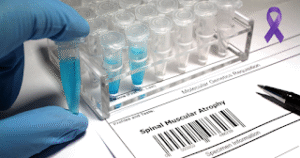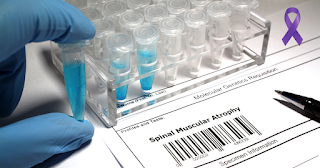Spinal Muscular Atrophy Awareness Month: Shedding Light on SMA and Supporting the Community
August is a significant month for raising awareness about Spinal Muscular Atrophy (SMA), a genetic disorder that affects muscle control and movement. This month-long campaign is dedicated to educating the public, promoting early diagnosis, and supporting those impacted by SMA. The color purple represents this awareness month, symbolizing hope for a cure and solidarity with the SMA community. Through various events and initiatives, advocates aim to highlight the importance of research, funding, and accessible treatments to improve the lives of those living with SMA.

Spinal Muscular Atrophy Awareness Month |
What is Spinal Muscular Atrophy?
Spinal Muscular Atrophy (SMA) is a genetic disorder that significantly impacts muscle control and movement. It is caused by a mutation in the SMN1 gene, which is crucial for producing a protein essential for motor neuron survival. When motor neurons fail, muscles weaken and atrophy, leading to various degrees of mobility impairment and other health issues. SMA affects people of all ages but is often diagnosed in infancy or early childhood. The severity of the condition can range from mild muscle weakness to severe motor dysfunction, respiratory difficulties, and even early death in the most severe cases.
What Month is Spinal Muscular Atrophy Awareness?
August is designated as Spinal Muscular Atrophy Awareness Month. This month-long campaign is dedicated to increasing public awareness, promoting early diagnosis, and supporting those affected by SMA. Through various activities, events, and educational programs, advocates aim to shed light on the challenges faced by individuals with SMA and their families. By highlighting the importance of research, funding, and accessible treatments, the awareness month seeks to drive progress toward a cure and improve the quality of life for those living with SMA.
What is the Color for Spinal Muscular Atrophy Awareness Month?
The color purple is associated with Spinal Muscular Atrophy Awareness Month. Purple symbolizes hope and strength, reflecting the community’s resilience and determination to find a cure. Throughout August, landmarks, social media platforms, and community events often feature purple to show solidarity and support for those affected by SMA. Wearing purple or displaying purple ribbons helps to raise awareness and foster a sense of unity and hope among advocates and supporters.
Show your support for Spinal Muscular Atrophy (SMA) Awareness Month with this stylish t-shirt. This shirt raises awareness and promotes early diagnosis and research funding. Perfect for advocacy events and everyday wear.
 |
| Spinal Muscular Atrophy Awareness Month 2024 |
What are the Symptoms of Spinal Muscular Atrophy?
The symptoms of Spinal Muscular Atrophy can vary widely depending on the type and severity of the condition. Common symptoms include:
- Muscle weakness and atrophy, particularly in the legs and arms
- Difficulty with motor skills such as crawling, walking, sitting, or lifting objects
- Respiratory problems due to weakened muscles used for breathing and coughing
- Swallowing and feeding difficulties
- Spinal curvature (scoliosis) and joint contractures due to muscle imbalance
These symptoms can present differently based on the type of SMA. For instance, Type 1 SMA, the most severe form, often manifests in infancy with significant muscle weakness and respiratory issues, while milder forms like Type 3 may present later in childhood or adulthood with less pronounced motor difficulties.
What are the Diagnostic Criteria for Spinal Muscular Atrophy?
Diagnosing Spinal Muscular Atrophy typically involves a combination of clinical evaluation, genetic testing, and other diagnostic procedures. Key diagnostic criteria include:
- Clinical Evaluation: A thorough medical history and physical examination to assess muscle weakness, motor function, and developmental milestones.
- Genetic Testing: Confirmation of SMA diagnosis through genetic testing to identify mutations in the SMN1 gene. This is the definitive method for diagnosing SMA.
- Electromyography (EMG) and Nerve Conduction Studies: These tests assess the health of muscles and the nerve cells that control them, providing additional information about the extent of motor neuron damage.
- Muscle Biopsy: In some cases, a muscle biopsy may be performed to examine the muscle tissue for signs of atrophy and other abnormalities.
Early diagnosis is crucial for managing SMA effectively. With advancements in genetic testing, it is now possible to diagnose SMA before symptoms appear, enabling earlier intervention and better outcomes.
Spinal Muscular Atrophy Awareness: Purple for Hope
Spinal Muscular Atrophy Awareness Month in August, marked by the color purple, is a time to unite in hope and advocacy. By raising awareness, promoting early diagnosis, and supporting research and treatment efforts, we can make strides toward a future where SMA is better understood, managed, and ultimately cured. Through collective efforts, we can bring hope to individuals and families affected by this challenging genetic disorder.
